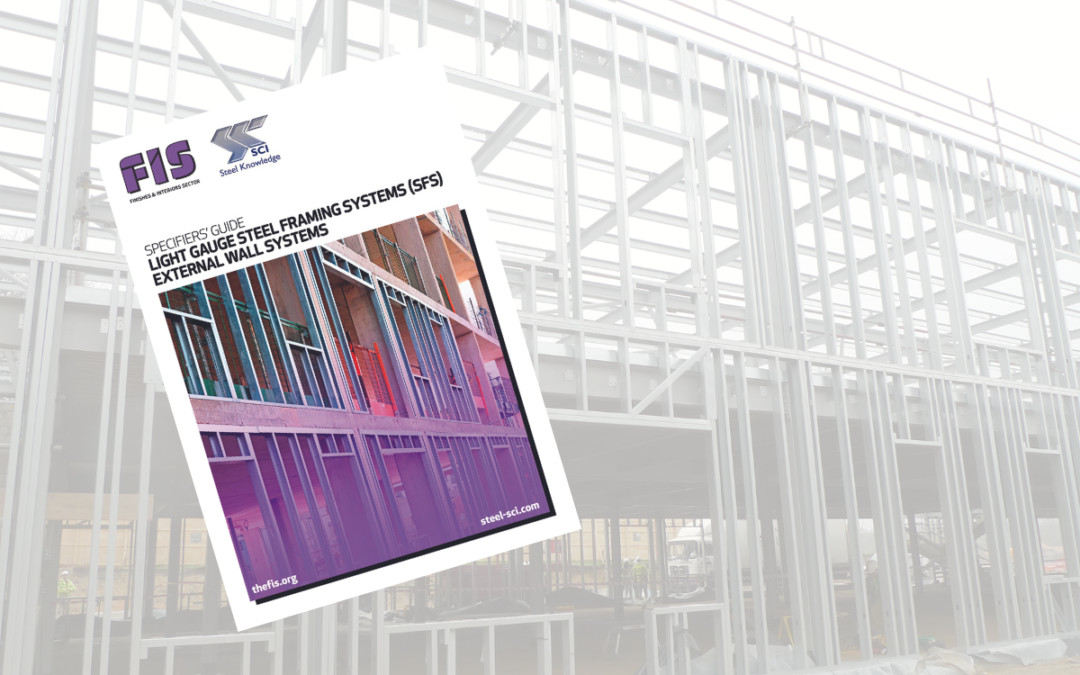
by Clair Mooney | 7 Jul, 2021 | Main News Feed, Market data
Forecast tool identifies over 1,150 public sector construction projects across Scotland valued at c.£8.5b.
An innovative online tool has been launched to provide the construction industry with greater clarity and understanding of future public sector construction projects to be delivered across Scotland.
The Construction Pipeline Forecast Tool has been developed by infrastructure body the Scottish Futures Trust in partnership with the public sector together with representatives from the construction industry.
The interactive tool has been created in response to actions coming from the Construction Industry Recovery Plan published in October 2020 by the Scottish Construction Leadership Forum.
With a current value of just under £8.5 billion, the Construction Pipeline Forecast Tool has details of over 1,150 future public sector infrastructure projects and covers many sectors including education, health, housing and flood prevention.
Of the 1,150 project opportunities, approximately 60% are below £2m in value, emphasising the focus on providing opportunities to small and medium-sized enterprises. This will continue to grow as additional contracting authorities join the system going forward and will be updated every six months.
By providing greater transparency on future workload, the pipeline will help businesses plan better and maintain their investment in skills and future training needs. It will also encourage collaboration between public sector organisations through a greater understanding of their respective construction pipelines.
The pipeline also seeks to provide a longer-term view on forecast investment and identifies construction projects up to 2028, with the majority of the forecast spend occurring before 2025. The types of construction projects include new build, refurbishments, maintenance works as well as road infrastructure.
The Construction Pipeline Forecast Tool allows the user to simply and easily explore data held using various criteria that includes the chosen procurement route, the procuring authority, contract value and sector.
Peter Reekie, chief executive of the Scottish Futures Trust (SFT) and chair of the Executive Group of the Scottish Construction Leadership Forum said: “Providing businesses working in the construction sector with this detailed information creates greater confidence through improved project transparency. As a result, it will allow businesses to invest correctly and recruit accordingly, as well as build stronger partnerships within supply chains.
“Through being a key partner in the Scottish Construction Leadership Forum, SFT took responsibility to deliver the Construction Pipeline Forecast Tool, one of the actions coming from the Construction Industry Recovery Plan which was published in October 2020 in response to COVID-19.
“Building the Construction Pipeline Forecast Tool was met with strong levels of engagement across the whole of the public sector, which has been greatly appreciated, and we look forward to continuing to work with the sector on this leading-edge development.”
Welcoming news of the pipeline launch, Ivan McKee, Minister for Business, Trade, Tourism and Enterprise, said: “This is a crucial time for business, trade and investment in Scotland and we are pushing forward with an ambitious agenda of recovery and economic transformation. Construction will play a key part in that recovery, delivering critical infrastructure and supporting our important net zero commitments.
“By working together and galvanising the expertise and ingenuity of the construction industry, we can enhance Scotland’s economic potential and deliver greater, greener and fairer prosperity.
“This online tool will provide businesses with the pipeline visibility they need to plan investment in skills, labour and materials which will support jobs and business growth. It also delivers new opportunities for small and medium-sized business across the sector by providing visibility of smaller contracts. This key ask from industry has been delivered through the Construction Leadership Forum Recovery Plan – demonstrating how we can work together to deliver the changes the sector needs.
“This is just the start of an exciting process and I encourage other public bodies to share their data to broaden their market access.”
Stuart Parker, member of the Construction Scotland Industry Leadership Group and Chair of its Procurement sub-group, said: “The Construction Pipeline Forecast tool is a really exciting development for the industry, bringing together details of the upcoming opportunities in the sector in one user-friendly format.
“It will really help the industry to understand the direction of travel in social infrastructure, providing confidence to invest in the resources and skills needed to help the country rebuild better. The tool will help to provide visibility of opportunity to businesses of all sizes, but particularly SMEs throughout the supply chain.”
Speaking of the pipeline, Donald Gillies, Director of Place from South Ayrshire Council, said: “From a local authority’s perspective, the pipeline provides improved clarity of planned activity across neighbouring council areas which can help foster greater levels of collaboration and insight on future investment in infrastructure and buildings.
“Importantly, the pipeline will support the delivery of high-quality public sector buildings, created by a thriving construction industry employing local people.”

by Clair Mooney | 6 Jul, 2021 | Building Safety Act, Main News Feed, Transformation
The Building Safety Bill will set out a clear pathway for the future on how residential buildings should be constructed and maintained.
The Bill, published on 5 July 2021, will create lasting generational change and set out a clear pathway for the future on how residential buildings should be constructed and maintained.
The Bill provides a framework for a seizmic overhaul to building safety legislation, giving residents more power to hold builders and developers to account and toughening sanctions against those who threaten their safety.
The new Building Safety Regulator will oversee the new regime and will be responsible for ensuring that any building safety risks in new and existing high rise residential buildings of 18m and above are effectively managed and resolved, taking cost into account.
This will include implementing specific gateway points at design, construction and completion phases to ensure that safety is considered at each and every stage of a building’s construction, and safety risks are considered at the earliest stage of the planning process.
These changes aim to simplify the existing system to ensure high standards are continuously met, with a ‘golden thread’ of information created, stored and updated throughout the building’s lifecycle, establishing clear obligations on owners and enabling swift action to be taken by the regulator, wherever necessary.
Under the proposals, the government is more than doubling the amount of time, from 6 to 15 years, that residents can seek compensation for substandard construction work.
The changes will apply retrospectively. This means that residents of a building completed in 2010 would be able to bring proceedings against the developer until 2025.
These reforms also include new measures which apply to those seeking compensation for refurbishments deemed to make the home unliveable.
New measures in the Building Safety Bill introduced today will:
- Ensure there are clearly identified people responsible for safety during the design, build and occupation of a high-rise residential building.
- Establish a Building Safety Regulator to hold to account those who break the rules and are not properly managing building safety risks, including taking enforcement action where needed.
- Give residents in these buildings more routes to raise concerns about safety, and mechanisms to ensure their concerns will be heard and taken seriously.
- Extend rights to compensation for substandard workmanship and unacceptable defects.
- Drive the culture change needed across the industry to enable the design and construction of high-quality, safe homes in the years to come.
Minister for Building and Fire Safety Lord Greenhalgh said: “The comprehensive steps we are taking today will ensure that industry and the regulatory system fully address the concerns raised in the ‘Building a Safer Future’ report by Dame Judith Hackitt.
“Though the overall risk of fire across all buildings remains low, we can’t be complacent – the more robust regime will take a proportionate and risk-based approach to remediation and other safety risks.
“And by increasing our measures of enforcement, we will make sure industry follows the rules – and is held to account when it doesn’t.”
The Bill will include powers to strengthen the regulatory framework for construction products, underpinned by a market surveillance and enforcement regime led nationally by the Office for Product Safety and Standards (OPSS).
The national regulator will be able to remove products from the market that present safety risks and prosecute or use civil penalties against any business that breaks the rules and compromises public safety.
The Bill also contains measures to protect leaseholders by providing a legal requirement for building owners to explore alternative ways to meet remediation costs before passing these onto leaseholders, along with evidence that this has been done.
This builds on the government’s commitment to fully fund the cost of replacing unsafe cladding for all leaseholders in residential buildings 18 metres and over in England, with an unprecedented £5 billion investment in building safety. This is alongside the introduction of a new levy and a tax to ensure that industry pays its fair share towards the costs of cladding remediation.
Developers will also be required to join and remain members of the New Homes Ombudsman scheme, which will require them to provide redress to a homebuyer, including through the awarding of compensation. Developers who breach the requirement to belong to the New Homes Ombudsman may receive additional sanctions.
Chair of the Independent Review of Building Regulations and Fire Safety Dame Judith Hackitt said: “I am delighted that we have reached this important milestone for the Building Safety Bill. It is vital that we focus on getting the system right for the future and set new standards for building safety.
“Residents and other stakeholders need to have their confidence in high rise buildings restored and those who undertake such projects must be held to account for delivering safe buildings.”
Building Safety Bill documents
FIS hosted an update and debate on the introduction of the Building Safety Bill in October 2020 – you can access a recording of the event here
View the FIS Statement on the Building Safety Bill changes that highlights a key concern related to changes to the Defective Premises Act – dated 9th July 2021

by Iain McIlwee | 5 Jul, 2021 | Main News Feed, Material Shortages
This month we have seen further announcements on price rises, whilst at the same time we can see in the latest tender price reports from MACE showing that current tender price inflation is running at just 1.5% at the moment and expected to rise to a meagre 2.0% next year. It doesn’t take mensa maths to work out what this is doing to margins. Whilst we try and get our heads round the fact that despite rising costs of labour and materials and a healthy pipeline emerging prices are being squeezed in this way, we have updated our headline and supporting guidance on managing your business in a time of shortage below.
Talk to your clients about the challenges in securing material and the importance of early appointment to give you time to prepare.
Be wary of design liability. It is also vital to consider the specification, switching elements because you can secure them as an alternative may not necessarily support full certification and warranties as a system, to fulfil programmes. Any change to materials and products installed should be EQUAL AND APPROVED or you may be absorbing risk and design liability. Beyond inadvertent design liability, we are also seeing (for a combination of reasons, not least cost and availability of insurance) pressure on subcontractors to take on design liability within their contract. Do you fully understand what is the liability and cost of this, does your insurance cover it? We strongly urge you to exercise caution.
Before accepting a contract, make sure you can fulfil it. It is vital to check you can secure the material and at what price, does your supply agreement guarantee a price?
Double check your estimates. With pricing erratic, double check your maths – estimations need to be on point and there is literally little margin for error. Make sure you state that the quotation is only valid for a short amount of time, and that it is dependent on material supply (do you need to update statements on estimates, quotes and to issue new advice to your team?). If you are trimming supervision to make the maths work, what could be the risk and cost in terms of quality and safety?
Consider the resilience of your supplier, how long have you worked with them, how well do you know them, how important are you to them, how confident are you they will deliver? There is some support and guidance on this in the FIS Project Risk Assessment Tool.
Consider the resilience of your customer, through FIS you can get free credit checks. This isn’t a panacea, but we have seen a number of failures in the construction sector and if margins continue to squeeze there will be more. In the wake of the burden of retentions and aggressive tendering meaning profits will be lost and won in variation and change – will you get paid, how much and just how contractual is this job likely to be at that price?
Be realistic. Before signing a contract with potentially onerous delay responsibilities ensure you have checked these carefully, are all these risks in your control to manage? If you are already locked into a contract and experiencing delays/inflation then look to your contracts and follow the process – remember it is likely that, regardless of blame and responsibility, you will be obliged to ensure that as soon as it becomes “reasonably apparent” that work is likely to be delayed, notice must be given to the relevant party. If prices are spiralling, talk to your customer, negotiate.
Check for damages. If you are yet to sign, it is well worth ensuring that supply related delays that will in many cases be beyond your control cannot be a factor in determining liquidated damages. Remember force majeure relies on events being unforseeable.
Dust off those fluctuation clauses. Before you sign a contract check the fluctuation clauses too (albeit they typically seem to be scratched out of the standard contracts). If you cannot negotiate a shared risk approach with your client (and we are getting reports that clients are starting to accept fluctuations), you need to seriously consider pricing in risk moving forwards – what could worse case scenario mean to your business if prices drifted?
FIS has updated advice in its Contractual and Legal Toolkit, including advice on fluctuations, managing delays and extensions of time within contracts. It also highlights the role that the RICS developed and CLC endorsed Conflict Avoidance Process and Conflict Avoidance Pledge can play in helping to ensure issues related to shortage and availability doesn’t flair up in unnecessary conflict and exacerbate a difficult situation to a crisis.

by Clair Mooney | 2 Jul, 2021 | Main News Feed
From 1 July employers will, for the first time since last year, have to contribute toward furlough payments – employer contributions now sit at 10% and will rise to 20% in August and September. This change marks the start of the wind down of the scheme, which is proposed to end on 30 September 2021.
With these changes in mind, are you confident you know what your options are when it comes to the end of furlough? Citation’s HR & Employment Law experts have put together a flow chart that outlines some of the possibilities. You can download a copy here.
If you’ve got questions about what to do when it comes to bringing people off furlough, FIS members have access to the Citation advice line 24/7 on 0345 844 4848.

by Clair Mooney | 2 Jul, 2021 | Main News Feed, Membership, Technical
FIS in partnership with the Steel Construction Institute (SCI) has launched a Specifiers’ Guide to Light Gauge Steel Framing Systems (SFS) External Wall Systems to help specifiers understand the granular details involved in the design process and production of a specification.
The Specifiers’ Guide was produced by the FIS SFS working group made up of manufacturers and installers of SFS external wall systems in conjunction with the Steel Construction Institute (SCI), which provide an independent source of information and engineering expertise in steel construction. It is intended to guide architects, engineers, designers and installers through the stages in designing, selecting and specifying steel framed systems to form the external envelope for steel and concrete framed buildings.
FIS Chief Executive Iain McIlwee said: “This is the second specialist guide that FIS has produced in partnership with the Steel Construction Institute and demonstrates the strength in collaboration, producing guidance to ensure that accurate and detailed specifications can be written so that external walling systems can be procured and installed to meet the required specification.
Commenting on the guide, Colin Kennedy, Chair of the FIS SFS working group and Managing Director of FIS member Veitchi Interiors said: “Specifying SFS external wall systems requires considerable thought and design, even before a specification can be written. This is because the specification should be developed alongside the engineering design rather than a simple output from a list of attributes and parameters, to cover the three light steel external wall systems and the six current variants of SFS.”
Andrew Way, Associate Director at the Steel Construction Institute, added: “In order to achieve the correct specification, a considerable amount of information is required about the intended use of the product and the desired performance characteristics. This was the learning curve for me and the key lesson that this new guide addresses, in that the SFS should be fully engineered specifically for the building. Most importantly its location, proximity to other buildings and how that building is designed to accommodate movement is essential before it can be specified.”
Colin Kennedy continued by saying: “The construction industry is rightly under the microscope to ensure that the lessons from the terrible tragedy three years ago at Grenfell Tower are learned and that this starts with ensuring that the specification is clear, compliant and written by those who are competent and subsequently installed by those who can demonstrate they have the Skills, Knowledge, Experience and Behaviour (SKEB) to be considered competent.”
The guide includes 23 questions relating to ‘critical building information’, a further 15 questions to check that they are all addressed, a list of 10 questions on risk and how to avoid them and a further 10 questions on writing a smart specification to ensure a safe, compliant and complete specification can be written. All of which is crucial to ensure that the specification is not open to misinterpretation, and that any alternatives can be assessed and checked as equal, before approving them.
The guide sits alongside other FIS best practice guides that relate to SFS:
Design and Installation of Light Steel External Wall Systems
Recommendations for the Safe Ingress of Plasterboard
FIS Health and safety handbook
These guides work well when they are included in proposals and project plans to demonstrate how to best approach a project and are an excellent introduction to new members of the team and any trainees and apprentices.
You can download the Specifiers’ Guide to SFS External Wall Systems here https://www.thefis.org/membership-hub/publications/specifiers-guides/light-guage-external-wall-systems/

by Clair Mooney | 28 Jun, 2021 | Main News Feed
On 6 July, CPA will be hosting a webinar to update the sector on the outstanding issues of concern following the UK-EU trade and cooperation agreement particularly around CA marking, new border controls and logistics for construction product manufacturers, as well as the impact of all this on product availability.
The webinar will be hosted by CPA Chief Executive, Peter Caplehorn with input from CPA Senior Technical Manager, Duncan King. There will be an opportunity for Q&A towards the end of the webinar. Join this CPA webinar on Tuesday 6 July 2021 at 3pm to find out. This webinar is open to both CPA members and non-members alike. Please register here.






